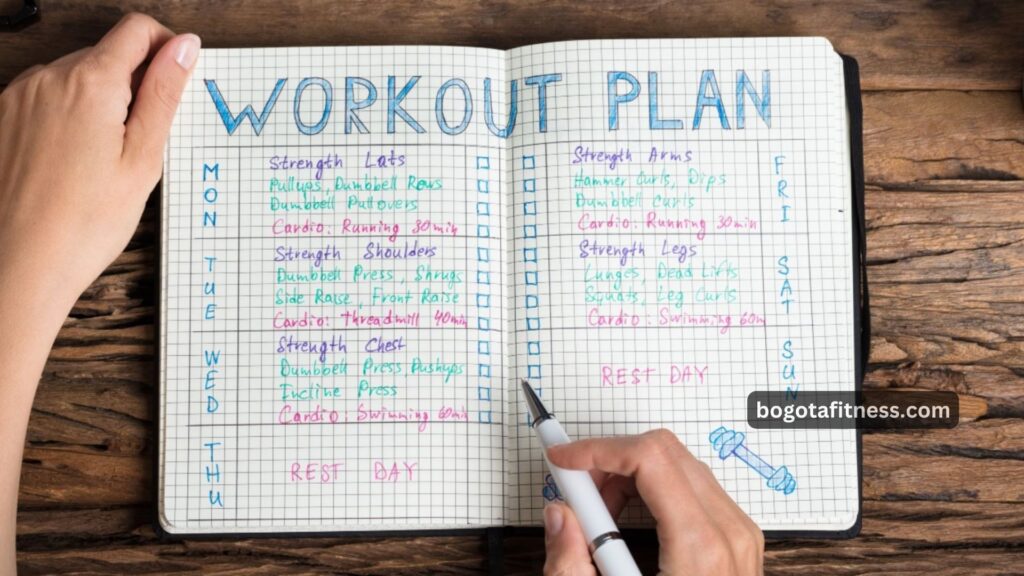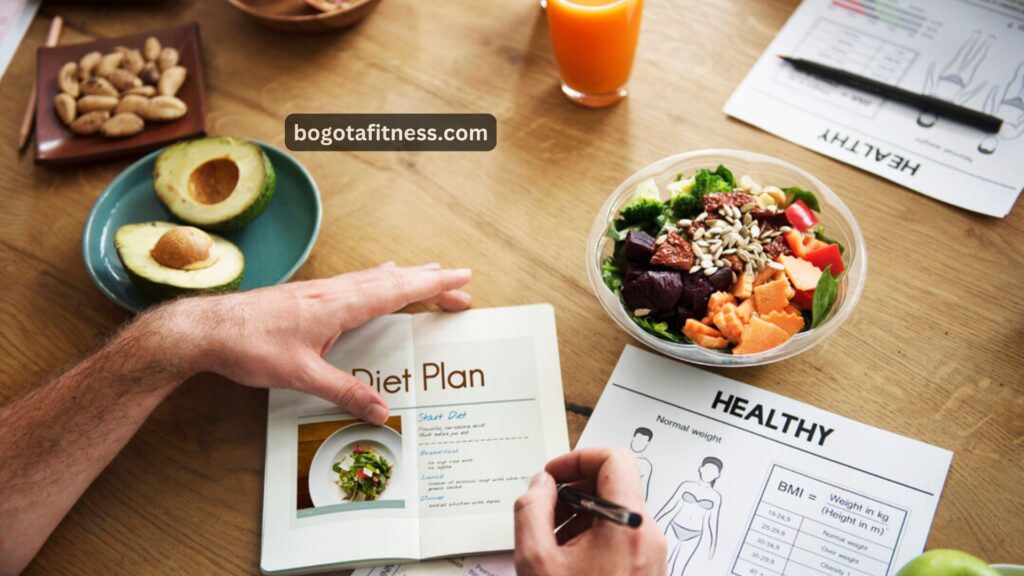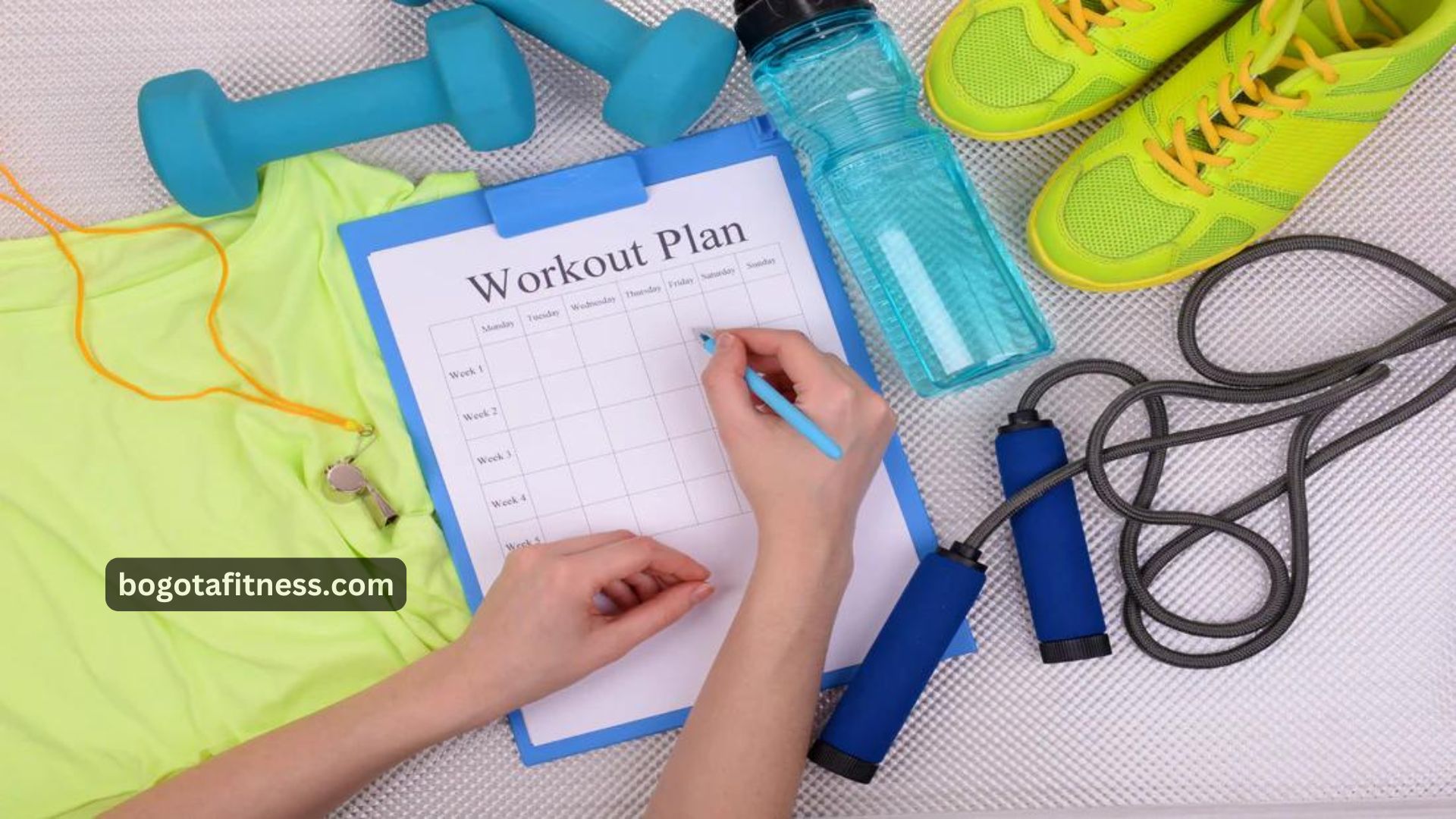We get tons of messages every week asking, “What’s the best workout plan?” Our answer is always the same: the best workout plan is one that’s personalized just for you.
Today, we’re going to give you all the tools you need to create your own custom workout plan.
What’s the best of all?
It’s simple.
Let’s dive in and learn how to put together an exercise plan that covers both workouts and nutrition.
Here’s how to create a personalized workout plan with a focus on exercise and nutrition.
Step 1: Assess your abilities
First things first: Assess your skills.
Before you jump into a personalized exercise program, it’s important to understand where you’re starting from. Here are three key questions to consider:

- What is your body composition?
This is the ratio of muscle to fat in your body. Checking your body composition helps you set realistic goals and track your progress. You can do this by taking a picture of yourself or using tools like an Inbody body analysis. - How well can you move?
Think back to your last workout. Which movements felt easy and which ones were tough or painful? Jot down your answers because they’ll help you choose the right exercises. It’s a good idea to get a fitness pro to assess your movements for the best results. - How fit are you?
You need to find the right level of difficulty for your workouts. Too easy won’t get you results, but too hard might lead to burnout or injury. Reflect on past exercises: what felt too easy and what was too challenging? This will help you plan the duration and intensity of your cardio and weight training. If you have equipment like an airbike or rower, use them to gauge your work capacity.
Assess Your Resources
Finally, take stock of what you have available:
- How many days a week can you work out?
- How much time can you commit each day?
- What fitness equipment do you have access to?
- What’s your budget for food?
Knowing your resources helps you tailor your workout plan to fit your lifestyle and goals.
Step 2: Identify Your goals
Once you’ve figured out where you’re starting from, it’s time to set your goals.
First, ask yourself: Why do you want to work out? Don’t settle for a quick answer—dig a bit deeper. Is your goal to lose weight because you want to set a good example for your family, or are you aiming to reach your full potential?

Understanding your true motivation is crucial for sticking with your workout plan.
Next, create a SMART goal. This means making your goal Specific, Measurable, Achievable, Relevant, and Time-based.
For example:
- If you want to build muscle, you might set a goal like: “I want to gain 2 pounds in the next two months.”
- If you’re aiming to lose weight, try: “I want to lose 3 pounds in 2 months.”
These goals are specific (you know exactly how many pounds), measurable (you can track your progress), achievable (they’re realistic), relevant (they align with your overall goal), and time-based (you’ve set a deadline).
If you’re new to exercising, start with small, consistent goals. For instance, aim to work out for 30 minutes, three times a week for a month. As you hit these smaller targets, you’ll build confidence and be ready to tackle bigger goals.
Step 3: Create a Personal Workout Plan
Now it’s time to build your personalized exercise plan based on your assessment results.
A balanced workout plan should include both weight training (resistance) and aerobic exercises. Mixing these two types is smart because resistance training boosts your metabolism, while aerobic exercises strengthen your immune system and help you recover faster.

Here’s how to create two workout plans: one for beginners and one for more advanced individuals.
Beginner Plan:
If you’re new to exercising or unsure of your level, start with the beginner plan. Even seasoned athletes will see benefits from these basics.
Weekly Beginner Workout:
Exercise 4 to 5 times a week.
- Weight Training: Do full-body workouts 2 or 3 times a week.
- Cardio: On the other days, engage in sustainable cardio like walking, biking, hiking, or playing sports.
Sample Beginner Schedule:
- Monday: Full-body weight training
- Tuesday: Cardio (bike, walk, or hike)
- Wednesday: Full-body weight training
- Thursday: Cardio (bike, walk, or hike)
- Friday: Full-body weight training
- Saturday: Active rest day
- Sunday: Active rest day
Advanced Plan:
If you’re more experienced, you’ll likely work out 4 to 6 days a week.
- Weight Training: Focus on 2-4 days of lifting, splitting between upper and lower body workouts.
- Cardio: Use walking or other cardio on your non-training days.
Sample Advanced Schedule:
- Monday: Upper-body weight training
- Tuesday: Cardio (rowing or biking)
- Wednesday: Lower-body weight training
- Thursday: Upper-body weight training
- Friday: Cardio (rowing or biking)
- Saturday: Lower-body weight training
- Sunday: Active rest day
Choosing Exercises:
For weight training, you’ll focus on six movement patterns: squats, lunges, pushes, pulls, and core exercises. Beginners should try to cover most of these in each workout.
Order of Exercises:
Start with multi-joint compound exercises like squats, bench presses, and deadlifts. Then move on to simpler, single-joint movements.
Sample Exercise Routine:
- A) Bench Press: 3 sets of 8-10 reps; rest 60 seconds
- B1) Bent Over Barbell Row: 3 sets of 8-10 reps; rest 60 seconds
- B2) Landmine Press: 3 sets of 8-10 reps; rest 60 seconds
- C1) Seated Single Arm Bicep Curls: 3 sets of 8-10 reps; rest 60 seconds
- C2) Chest Supported Cable Tricep Pushdown: 3 sets of 10-12 reps; rest 60 seconds
Reps, Sets, and Rest:
For beginners, aim for 8-15 reps to build muscle endurance and control, with 2-4 sets per exercise. As you get stronger, increase the weight and decrease the reps for more strength and endurance.
Quality Over Quantity:
Focus on doing each rep correctly rather than just doing more reps. Quality reps are more effective and help build good habits. Twenty great reps are better than 100 poor ones.
Step 4: Create an Exercise Plan
Cardio workouts are all about steady aerobic exercise done over a longer period. They’re great for boosting your immunity, brain function, and recovery speed.

Pick an activity for your cardio session—walking, cycling, rowing, and hiking are excellent choices. Then decide on a distance or duration and go at a pace that feels right for you. Start with your chosen distance or time, and gradually increase it as you get fitter.
Here’s how you can slowly ramp up your cardio:
Walking Plan:
- Week 1: Walk for 20 minutes
- Week 2: Walk for 30 minutes
- Week 3: Walk for 40 minutes
- Week 4: Walk for 50 minutes
Cycling Plan:
- Week 1: Ride 4 miles
- Week 2: Ride 5 miles
- Week 3: Ride 6 miles
- Week 4: Ride 7 miles
It might seem simple, but sticking to a steady, manageable pace is incredibly effective. You’ll be surprised at how much progress you can make.
Sample Workout Plans:
Beginner Full-Body Workout:
- A1) Kettlebell Romanian Deadlift: 3 sets of 8-10 reps with a 60-second rest in between.
- A2) Dumbbell Bench Press: 3 sets of 8-10 reps; rest 60 seconds.
- B1) Goblet Squat: 3 sets of 8-10 reps with a 60-second rest.
- B2) Seated Lat Pull Down: 3 sets of 8-10 reps; rest 60 seconds.
- C) Banded Dead Bug: 3 sets of 10-12 reps with a 60-second rest.
Advanced Workout Plans:
Upper Body Training Day:
- A) Weighted Pull-Up: 4 sets of 3 reps; rest 2-3 minutes.
- B1) Seated Dumbbell Press: 3 sets of 5-6 reps; rest 90 seconds.
- B2) Single Arm Landmine Row: 3 sets of 5-6 reps; rest 2 minutes.
- C1) Dumbbell Fly: 3 sets of 8-10 reps; rest 90 seconds.
- C2) Plate Loaded Deadbug: 3 sets of 10 reps per leg; rest 90 seconds.
Lower Body Training Day:
- A) Romanian Deadlift: 4 sets of 3-4 reps; rest 2-3 minutes.
- B) Front Rack Split Squat: 3 sets of 5-6 reps; rest 2 minutes.
- C1) Kettlebell Front Wall Sit: 3 sets of 30-45 seconds; rest 90 seconds.
- C2) Weighted Front Plank: 3 sets of 60 seconds; rest 90 seconds.
Step 5: Create a Personalized Nutrition Plan
You’ve probably heard the saying “abs are made in the kitchen,” and it’s true. Nutrition plays a huge role in reaching your fitness and health goals.

It can be tricky to know where to start with all the nutrition advice out there, so we suggest focusing on the Apex Performance Guidelines first. Mastering these basics will make a big difference in reaching your goals.
Here’s a quick rundown of the Apex Performance Lifestyle Guide:
- Balance Your Time: You have 24 hours in a day. Make sure you balance work and rest.
- Follow Natural Patterns: Your energy levels are influenced by the sun and moon. Get some sunshine and rest when the moon is full.
- Embrace Life: Life is short—accept that and start living fully.
- Daily Routines: Hydrate, aid digestion, and get your blood flowing.
Daily Tips:
- Drink Water: Aim for half your body weight in ounces of water each day.
- Stay Active: Move daily to boost blood flow and recovery.
- Consistent Sleep: Go to bed and wake up at the same time every day.
- Enjoy Your Meals: Digestion takes 36-44 hours, so sit down, savor your food, and put away distractions.
The Apex Performance Guidelines might seem simple but can be tough to master. Stick with them before moving on to other steps.
Focus on Quality:
When you start picking specific foods, prioritize whole, unprocessed options. Natural foods are best. If you’re new to whole foods, a paleo food list can be a helpful guide, though we don’t recommend it for everyone.
Forget about calorie counting for now. Understanding basic nutrition needs and focusing on food quality often helps most people reach their health goals.
Reaching your fitness goals isn’t easy, but it’s possible. It’s about challenging yourself and making changes.
Sticking to a personalized workout plan tailored just for you will be more effective than random workouts you find online. Reach out to Apex Performance, and our coaches will create a customized program for you and help track your progress.
Interested in becoming a fitness trainer? It’s a rewarding career where you can help others achieve their health goals. You can become an independent fitness trainer in just six months and make a real impact on people’s lives.
Recommended Article: Nutrition for Peak Performance




